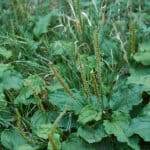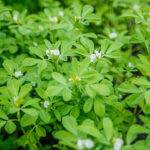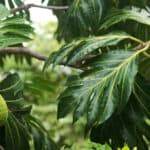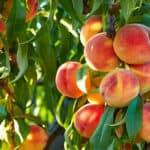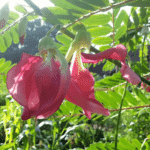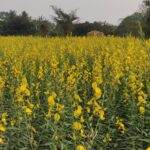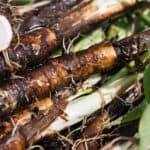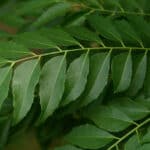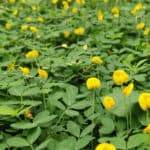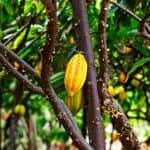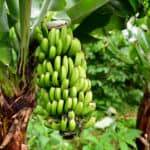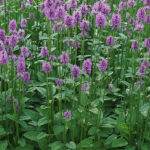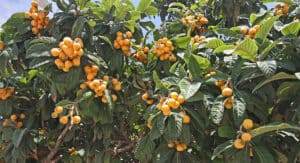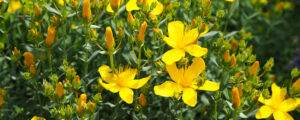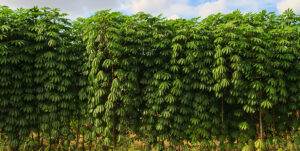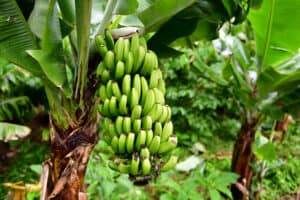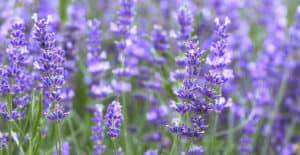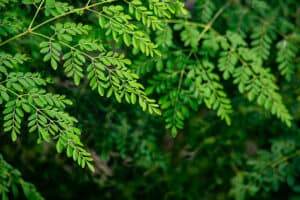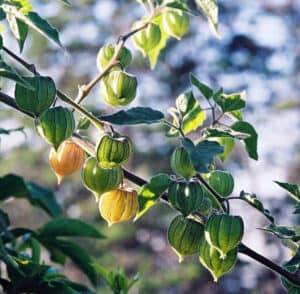Azadirachta Indica: An insight Into its Role in Regenerative Living
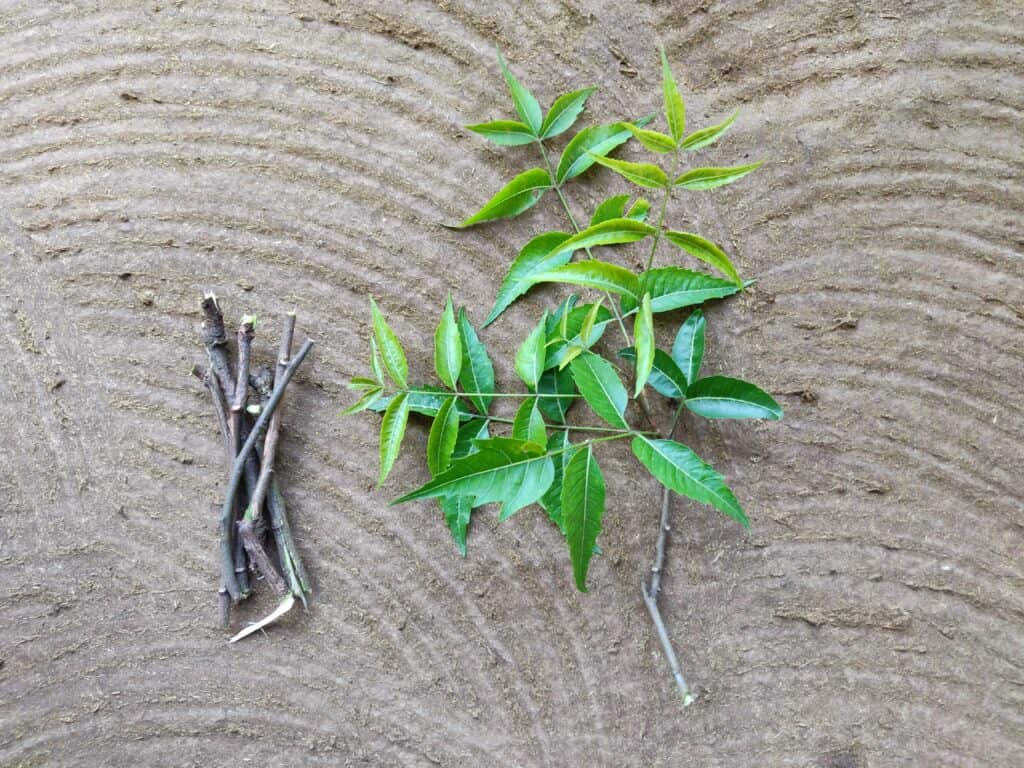
Azadirachta Indica, commonly known as the Neem tree, is an omnipotent tree. It is considered a sacred gift of nature in the Indian Subcontinent and nearby countries like Pakistan, Nepal and Bangladesh. It is one of the highest cultivated trees in traditional farmlands, backyards and medicinal plant gardens.
Neem belongs to the Meliaceae family, also known as the Mahogany, a flowering family made up majorly of trees and shrubs and a few herbaceous plants as well as mangroves. It is found in abundance in tropical and semitropical (semi-arid and semi-humid) regions. It is native to the Indian subcontinent, dry areas throughout South Asia and most of Africa.

It is a fast-growing evergreen tree with a trunk growing up to 20 to 25 m tall with a diameter ranging from 4 to 6 ft with a dense canopy. The leaves are medium to large in size and elongated to oblong in shape, they appear glossy and smooth with distinctively sharp and serrated edges. Each branch produces around eight groupings, each group consisting of two leaves. When torn, one can smell the strong aroma and they taste bitter.

The fruits are green and round, they turn golden yellow on ripening.
The traditional wisdom speaks of neem as a miracle tree used by humankind to treat various ailments from prehistory to contemporary. Indian Ayurveda describes Neem as ‘Sarva roga nivarini’ meaning ‘the universal healer’. It is also addressed as ‘Nimba” meaning ‘giving good health’. Ayurvedic texts mention the tree from as far back as 5000 BC. The leaves were first discovered at the excavation of Mohanjo-Daro, the largest settlement of the ancient Indus Valley Civilisation, and one of the world’s earliest major cities dating back to 2000 BC.
Almost 300 different phytochemicals are found in neem trees. There exists versatile usage across different traditional and modern medicinal applications. The leaf extract of neem is accounted to have different properties like anti-inflammatory, anti-fungal, hypolipidemic, immune stimulant and hepatoprotective effects.
Application of Neem in Cultivated Ecologies
Drought tolerant
It has a deep-rooted tap root system which makes it drought tolerant, and an excellent choice for rejuvenating eroded and drought-affected zones.
Soil Rejuvenator
Neem rejuvenates degraded soils. The compost made from the neem leaves effectively increases soil fertility, reduces its acidity and impacts pests like insects, rodents, and more.
The mulch of neem leaves, fruit and twigs which falls on the ground or is transported to fields by wind where it gets composted which inturn reduces the need of adding fertilisers. The high level of antioxidants contributes to the overall health of the soil and ultimately the plants.
Protector & Supporter
In dry lands, it provided shade for other plants, humans and animals. The leaf mulch helps enrich the soil and helps protect the plants around it from pest attacks.
In India, one can spot decades-old neem trees standing tall in between the community spaces, backyards, front yards and boundaries of farms. People usually gather around it for functions or just to relax during a sunny afternoon or to enjoy the morning and evening breeze.

Neem as Windbreaks
Neem can be seen planted along the fence and berms of farms in India as a windbreak. It is also included across the boundaries of villages and inside community settlements to help reduce the impact on wind on kitchen gardens and houses.
Source of Timber & Firewood
The timber obtained from neem is termite resistant and thus is preferred for building houses and farm tools. It is an excellent feature for folks living in the tropics as the termite infestation rate is high.
Its calorie-rich wood is excellent as firewood and makes a great fuel.
Agricultural Pest Repellent
Since ancient times, neem has been included as an effective pest management ingredient against beetles, corn worms, aphids, mealybugs, fungus gnats, whiteflies and more. It is used for both farming and stored grain pest management. It is used against more than 200 types of pests.
Neem is also used in farming in the form of neem seed cake, which is a neem seed residue left after seed oil extraction, it is an excellent nematicide and is added to potting mix to help build soil by enriching it and repel pests and pathogens from the soil.
Bee attractor
Neem tree flowers have a sweet aroma which helps attract honeybees.
Traditional Importance of Neem
Usage of Neem in day-to-day life
We can almost say that the day begins with Neem in traditional communities of India. A portion of branches is enough for a family of four to start their morning hygiene routine.
It’s a daily practice across many Indian villages to add neem leaves to bathing water, it’s usually done by plucking some fresh matured leaves and adding them to the water as it slowly heats over the firewood stove.
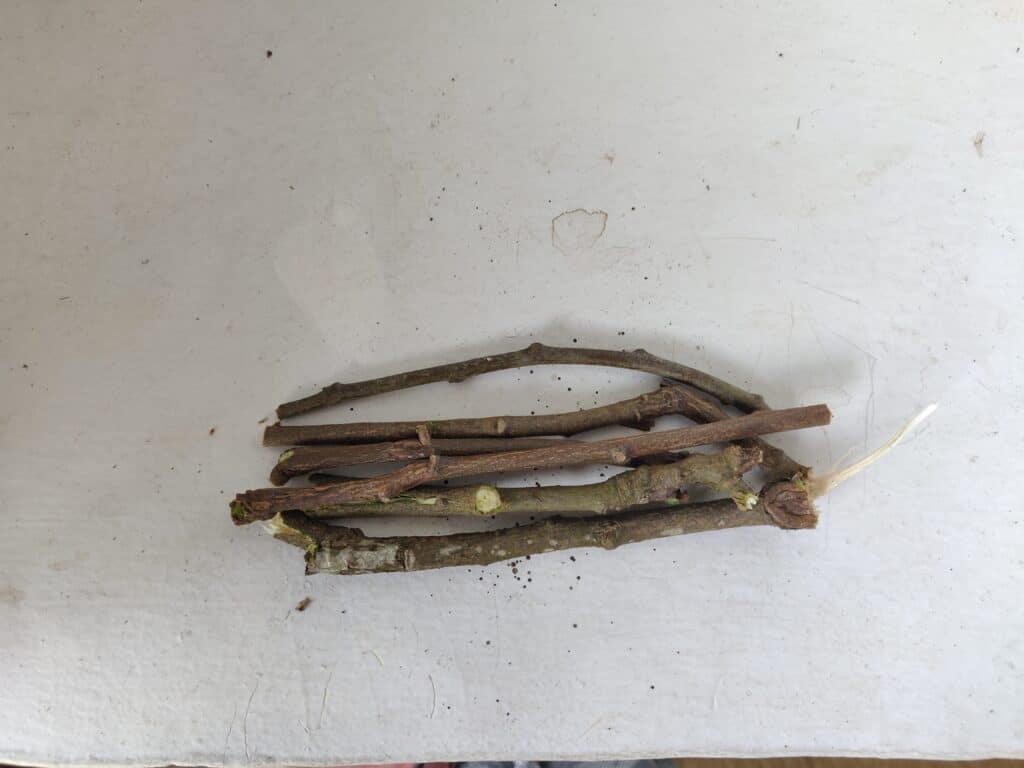
The neem tree twigs, called ‘datun’ are used as both toothpaste and brush for starting the day. One can chew them to extract juices from one side, once chewed, the portion turns fibrous like a toothbrush which can be used to gently brush the teeth. This is a daily practice in Indian villages, it’s an excellent alternative to tackle plastic toothbrush pollution and dependence on commercially packaged toothpaste as neem itself has strong anti-bacterial and anti-microbial properties. Brushing with datun sticks is effective in fighting germs, it helps maintain the alkaline levels in the saliva, keeping bacteria at bay. Additionally, it also helps treat swollen gums and prevents plaque.
People also like chewing neem leaves regularly as it also promotes fresh breath, maintains a pH level in the saliva and protects from tooth decay.
Neem leaves are a great source of fatty acids, vitamins and minerals, thus they have been included in the skin and hair care for ages. The mature leaves extract is used as a hair pack, it helps cure scalp infections and is a strong anti-dandruff. It also helps reduce dryness, flakiness, and itchiness and leaves the scalp moisturised and healthy.
The day ends with neem leaves being smoked on remains of firewood post dinner prep which helps ward off insects and is used to fight the mosquito menace.
Medicinal Application of Neem
A simple lookup on the internet can help one go through the tremendous amount of information available about the medicinal application of the Neem trees. Here are a few to get started with understanding the potential of this universal healer:
- The leaf paste is used as a wound healer because of its antiseptic properties.
- Traditionally extracted Neem oil is rich in fatty acids, which help promote wound healing.
- Leaf extract is used for soothing and treating irritated eyes, tiredness and redness.
- The leaves are ground with turmeric to heal ringworms, foot fungus itching and other mild skin diseases.
- Neem flowers are used to treat intestinal problems like anorexia, nausea and intestinal worms.
- Leaves are used to treat chickenpox by applying a paste of the leaves on the affected area, the person is also made to bathe in neem water every day until the condition is cured.
- Neem leaf tea is widely prescribed to reduce fever, especially malaria, it does taste bitter however it works wonder.
Edible Usage of Neem
Neem leaves are included as ‘Prasad’ which is basically a vegetarian food specially prepared for devotees after thanksgiving to the gods. In Maharashtra and Goa, India, a prasad of neem leaves and jaggery is offered on the occasion of ‘Gudi Padwa’, a spring-time festival that marks the traditional new year for Marathi and Konkani. Neem is full of antioxidants and jaggery is an immunity booster, this is one of the common prasad across India as together it helps strengthen the body and keep it safe from general ailments. Including it on New Year’s Day or during the beginning of various seasonal festivals is all about preparing the body for the upcoming season, the work and general well-being.
In South India, Neem flowers are used in various preparations like rasam (a form of curry), sabzi, and stir fry. Neem flowers are also dried and stored throughout the year as they have digestive properties, they are included in meals whenever there’s a need or as per the traditional recipes.
Indigenous Importance of Neem in Seed and Grain Preservation
In India, Neem leaves have been an integral part of grain storage and preservation since historic times. They are added to rice harvest during storage to protect it from bugs.
The process of storing grains involves layering neem leaves at bottom of the storage container, followed by grains and then another layer of leaves, the layers go with a final one on the top made of neem leaves again.
In some parts, neem leaves are dried and powdered, then mixed with soil and dung to form a paste. This paste is used to cover the cane baskets in which the seeds are saved. The baskets are sealed and dried.
Neem seed oil is rubbed on lentils and seeds which needs to be saved for a longer duration.
Growing and Caring for Neem
It can be propagated through seeds, cutting or root sucker. The seeds are dispersed in nature by birds. Seed-based propagation remains to be the most successful and preferred one due to the higher success rate and simple process.
How to grow Neem from seeds?
- Collect the fallen fruits and remove the seeds in front of the pulp, one can eat this pulp as well. The seeds then need to be washed with water.
- The seeds don’t need any pretreatment as such however they remain viable for a very short period of time as the fruit ripens and they should be planted fresh within four weeks of harvest. Thus it becomes important to collect the seeds in time and sow them under the right growing conditions.
- Neem seeds can germinate in almost all types of soil where the pH is up to 8.5, It prefers moist and well-drained soils though.
- The seeds can be sown directly into the soil or raised in potting mix.
- The seeds germinate and emerge within a span of 14 to 21 days.
Transplantation Tip: Need to be transplanted before the tap root pierces through the bottom as it affects the strength of the plant.
The tree needs full sun and well-drained soil, thus caring must involve placement in full sun zones and ensuring that the plant is not overwatered.
It has a low tolerance for colder temperatures, wet and waterlogged/ flood conditions and prolonged droughts.
Caring Tip: If you have an active need for harvesting the leaves, remember to feed your tree to help make up for those leaves.
A neem tree takes around 10 years to mature, post-germination, it starts fruiting around the 3rd to 5th year depending on growing conditions.
The tree can be seen living for more than 2 centuries at times.
In regenerative practices, especially Permaculture, the goal continues to be about minimal energy inputs with an optimal and environmentally sustainable yield, Neem Tree helps achieve this due to its “One Element, Multiple Functions” properties wherein it helps cater to numerous aspects ranging from making plant-based pest repellents at home/ farm to obtaining timber, medicine, food, oil and biodegradable daily hygiene products.
In Permaculture designs, neem can be included along the boundaries and near living areas. It can be included for rejuvenating degraded and contaminated zones as well. Numerous cosmetic and medicinal products can be made at home, at the individual or community level from different parts of the plant, making it a suitable one to help empower marginal communities economically by providing training on the harvesting and processing of Neem and its by-products.






